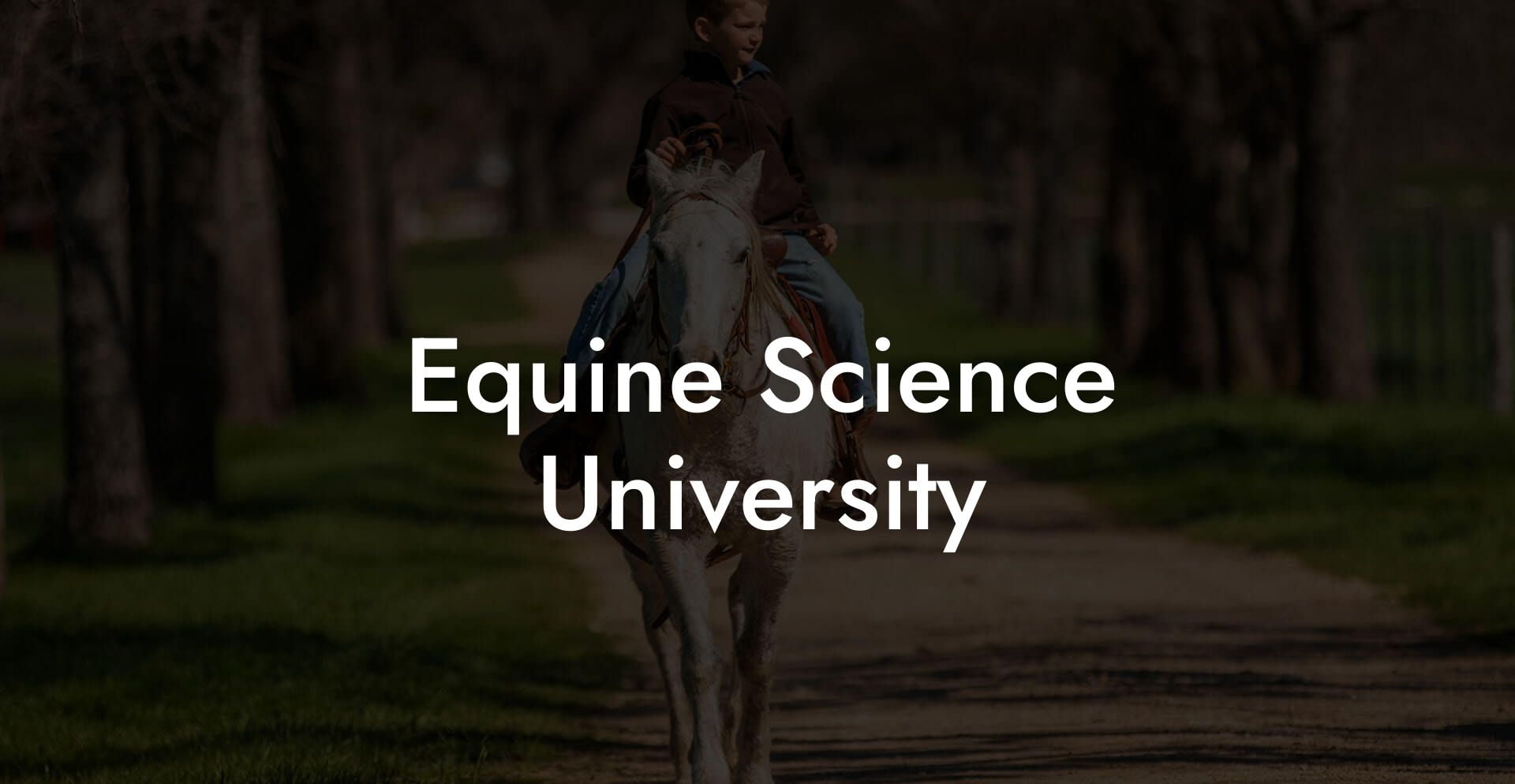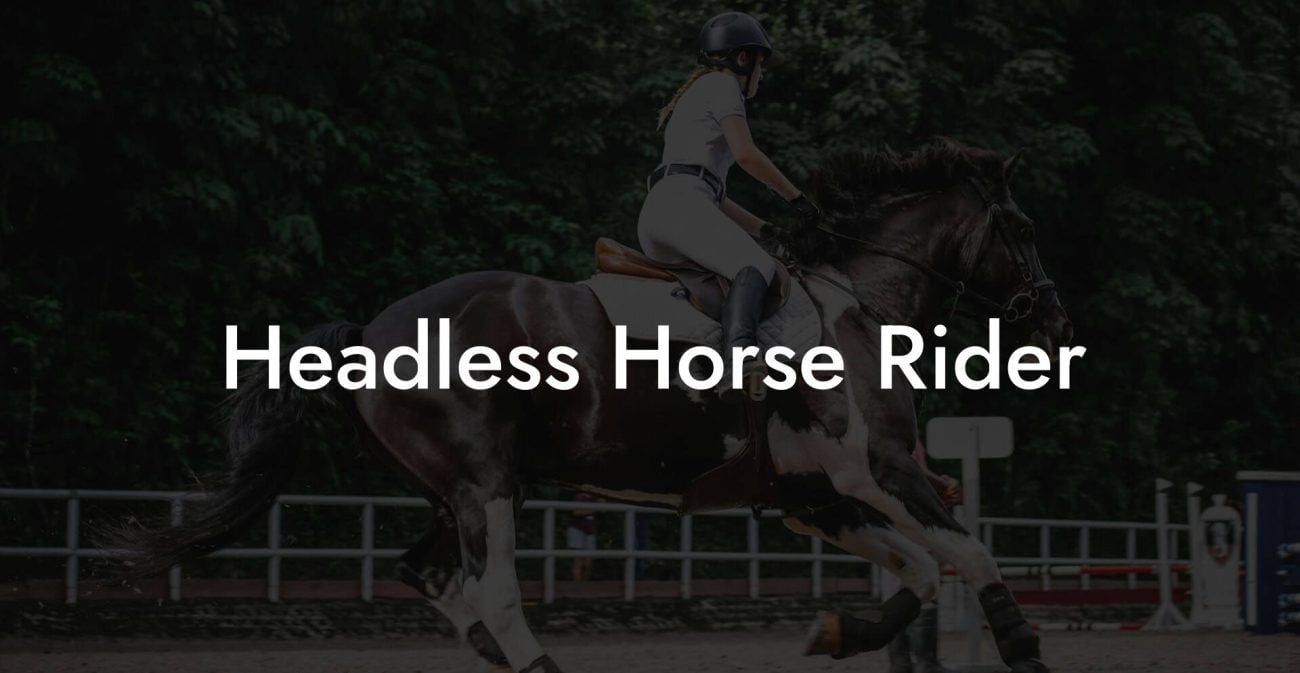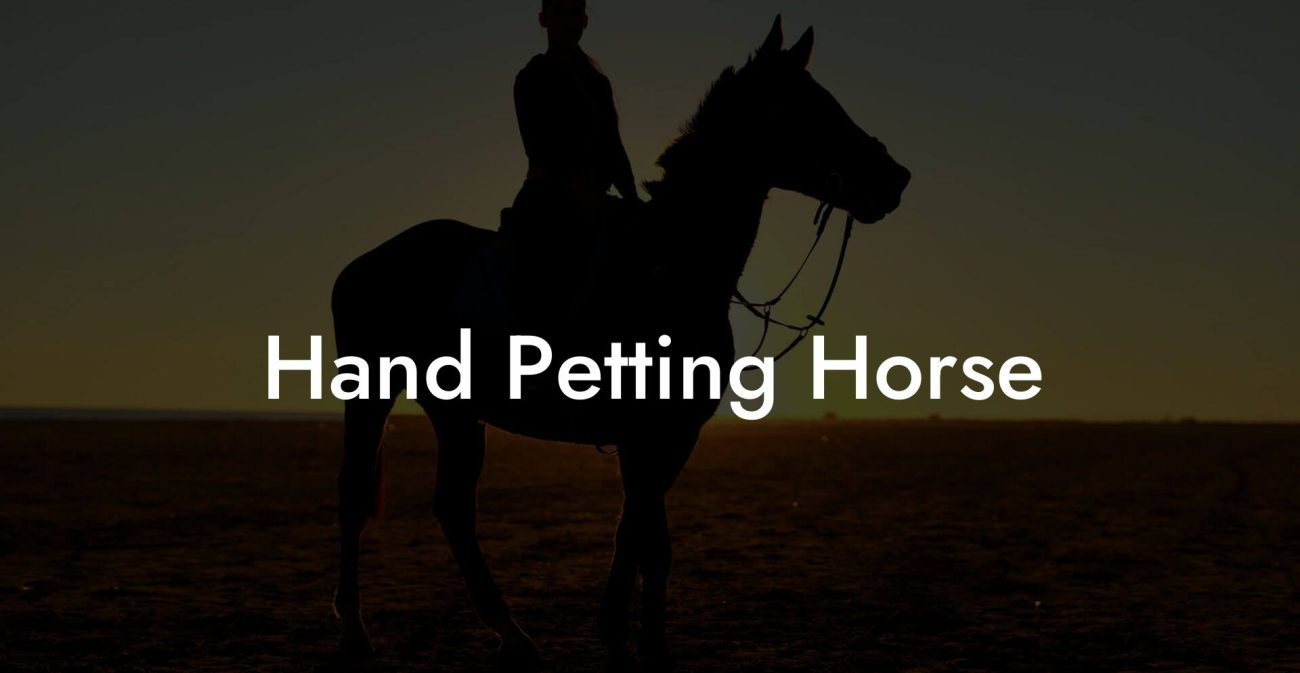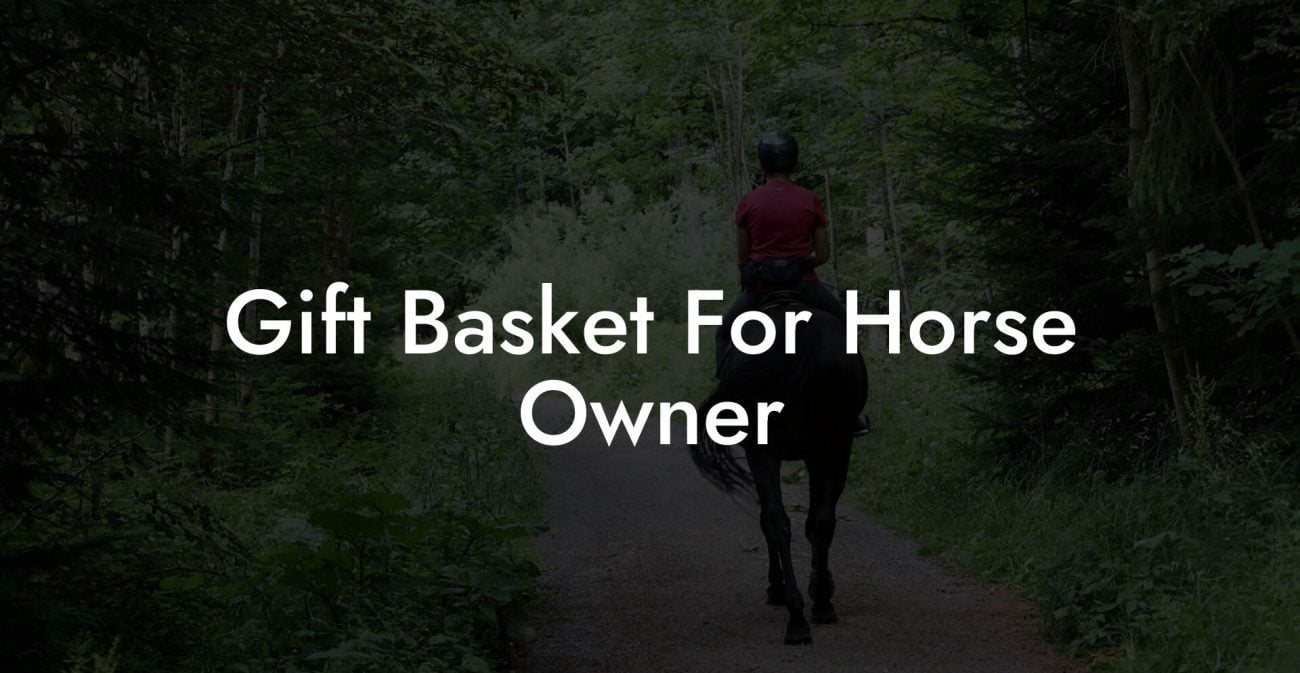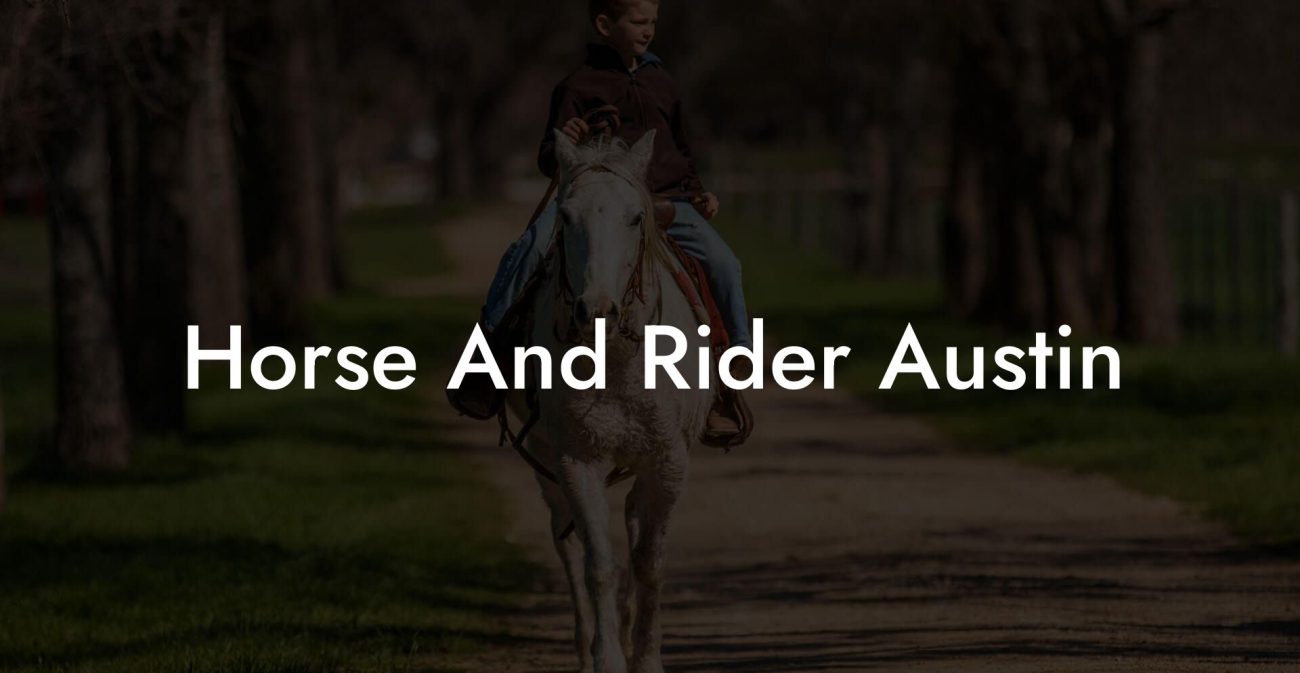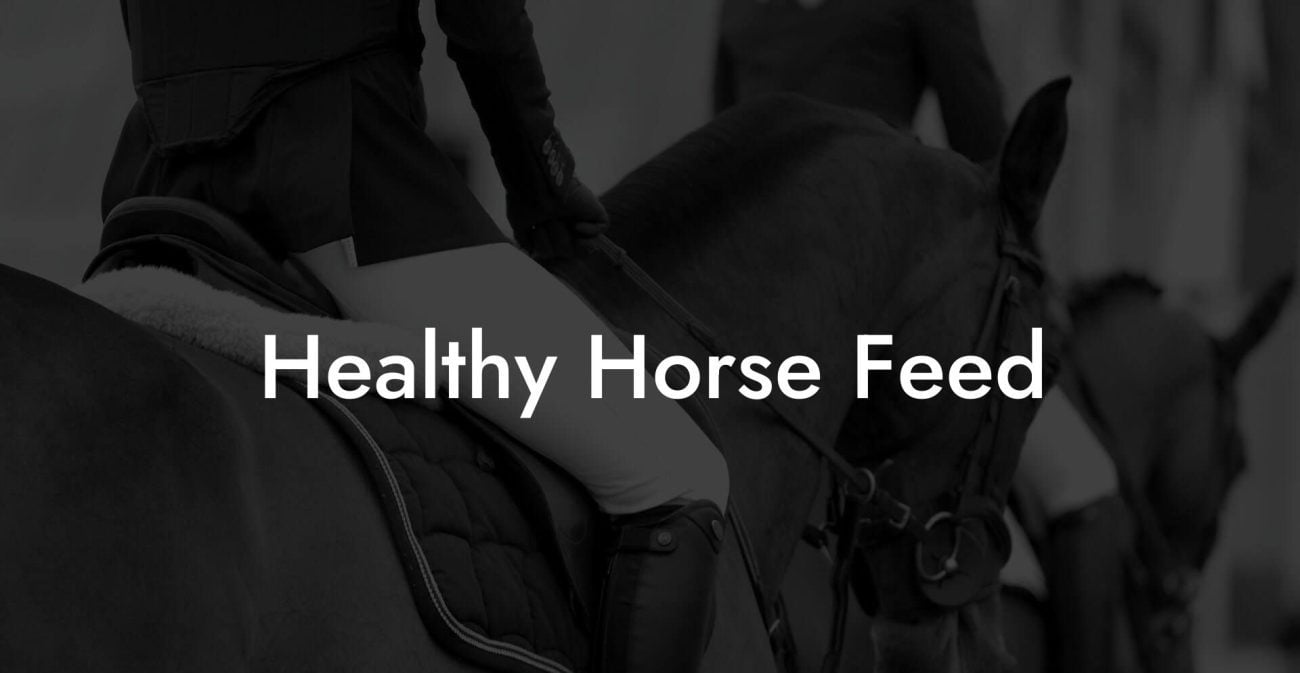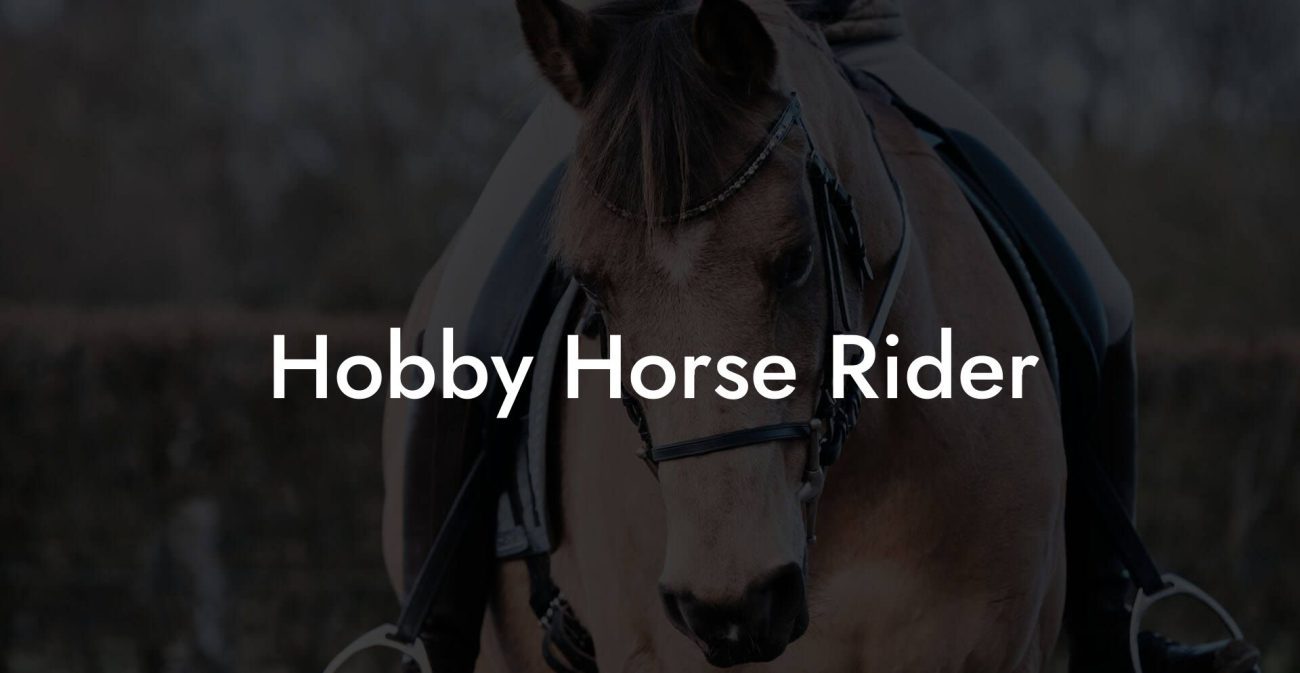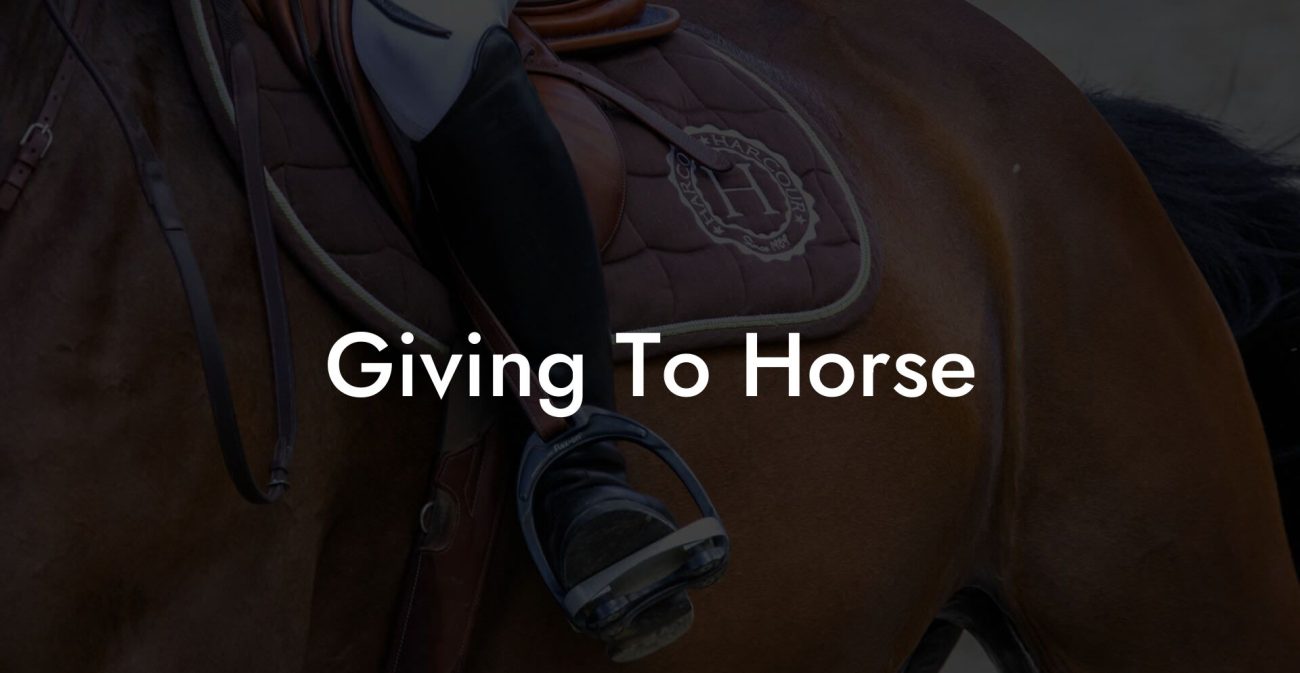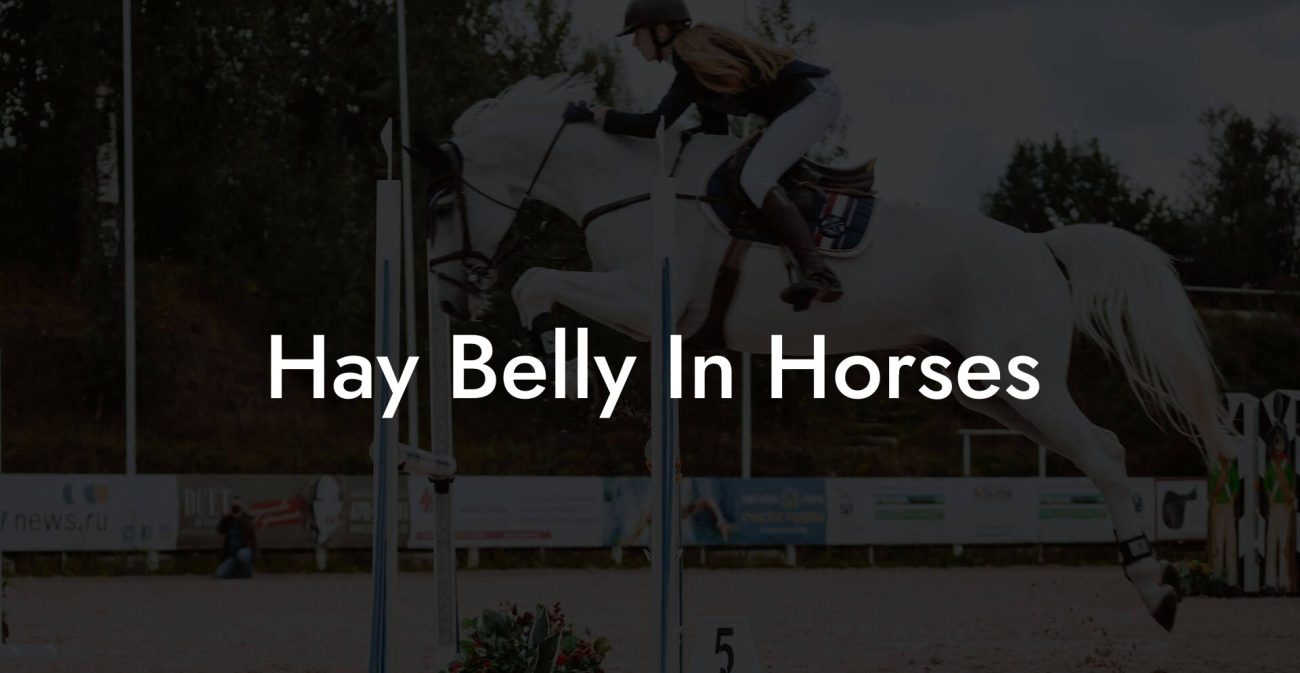Saddle up and get ready to gallop into the fascinating world of Equine Science University, a one-of-a-kind hub where cutting-edge horse care meets old-school barn wisdom, all served with a side of Gen-Z flair and millennial mischief. Whether you’re a first-time horse parent, an equestrian enthusiast, or just someone who’s curious about the magic behind hoof and heart, this epic guide is your VIP pass to mastering the art and science of caring for your four-legged friend.
Quick Links to Useful Sections
- Introducing Equine Science University: Where Horse Care Meets Modern Innovation
- The Equine Ethos: Understanding the Horse and Its World
- Equine Anatomy and Behavior: The Blueprint of Horse Care
- Inside the Equine Body
- Decoding Equine Behavior
- Nutritional Know-How: Feeding and Fueling Your Equine Athlete
- Pasture and Hay: The Bread and Butter of Equine Diets
- Supplements, Grains, and Treats: A Modern Twist
- grooming and Health: Keeping Your Horse in Fashion and Function
- The Daily Grooming Routine
- Preventative Health Checks and Veterinary Care
- Stable Management and Environment: Building a Home Your Horse Will Love
- Designing the Ideal Stable
- Routine Care and Cleaning
- Training and Equine Education: From Novice to Pro
- Foundations of Horsemanship
- Modern Techniques and Technology in Training
- Preventative Care and Safety: Keeping Your Horse Happy and Healthy
- Regular Health Assessments
- Injury Prevention and Recovery
- Innovative Trends in Equine Science: The Future of Horse Care
- Digital Health Monitoring
- Smart Stables and Automated Care
- Online Learning and Virtual Communities
- Case Studies in Equine Transformation: Real-Life Success Stories
- Case Study 1: From Shy Steed to Showstopper
- Case Study 2: The Comeback of a Veteran Stallion
- Case Study 3: Community-Driven Change in Rural Stables
- DIY Equine Maintenance: Your Daily Routine for a Thriving Horse
- Morning Routine: Kick-Starting the Day
- Midday Check-Ins: Keeping the Momentum
- Evening Wind-Down: Ending the Day on a High Note
- Resources and Community Support: Your Next Steps
- Frequently Asked Questions About Equine Science University
- Your Journey Through Equine Science: Embrace, Explore, Excel
Introducing Equine Science University: Where Horse Care Meets Modern Innovation
At Equine Science University, we believe that caring for a horse is as much about passion as it is about precision. Gone are the days when horse care was limited to brushing and feeding at sunrise. Today’s equine science integrates advanced nutrition, groundbreaking technology, and a deep understanding of animal behavior to create a holistic strategy that benefits both you and your equine companion. Think of it as Ivy League-level expertise, but with barnyard swagger.
Here, you'll dive into topics ranging from the intricacies of equine anatomy and nutrition to the latest breakthroughs in stable management and digital tracking systems. Whether you’re navigating the rocky terrain of a starter’s stable or charting new paths in competitive equestrian sports, this guide is engineered to equip you with the tools, tips, and insider secrets needed to succeed.
The Equine Ethos: Understanding the Horse and Its World
Before you can master the art of horse care, you must first understand the majestic animal at its core. Horses are extraordinary creatures whose history is interwoven with human civilization. They are not just animals, they’re athletes, nurturers, and even a little bit of rebels at heart. At Equine Science University, we approach every subject with enthusiasm, humor, and a relentless quest for holistic equine well-being.
In this section, we’ll explore:
- Horse Anatomy: Unpacking the magic behind every powerful muscle, tender tendon, and thunderous hoofbeat.
- Behavior and Communication: Learning to read your horse’s subtle cues, from a flick of an ear to a soulful stare.
- The Evolution of Equine Care: How ancient methods blend with modern science to create tomorrow’s best practices.
By tapping into both modern research and traditional horse whispering techniques, you’ll gain an invaluable perspective on your equine friend. Prepare to be amazed as you uncover the secrets that make horses such stellar partners in adventure and life.
Equine Anatomy and Behavior: The Blueprint of Horse Care
Let’s get under the hood, er, hide, of the magnificent equine specimen. Understanding the inner workings of a horse is the cornerstone of exemplary care. From the powerful strides of its legs to the heart that beats with wild energy, every part plays a critical role in overall performance and health.
Inside the Equine Body
Knowing a horse’s anatomy can be likened to exploring a high-speed sports car. Just as a Ferrari has finely tuned parts working in harmony, a horse’s body is built for both strength and grace. Key features include:
- Hooves: The unsung heroes of equine biomechanics, hooves protect the horse’s feet and absorb shock from powerful strides.
- Musculature: A robust network of muscles supports dynamic movement and endurance, vital for both racing and casual trail rides.
- Skeletal Structure: Lightweight yet durable bones permit agile maneuvers and bold leaps, the foundation of each elegant gallop.
- Nervous System: The brain-to-body connection that enables your horse to react, learn, and communicate, think of it as the equine Wi-Fi signal.
With this foundational knowledge, you'll learn why routine check-ups (including hoof inspections) and tailored exercise programs are essential to keeping your horse in tip-top shape.
Decoding Equine Behavior
Ever wondered why your horse might paw at the door or nicker softly when you approach? Understanding behavioral cues is akin to deciphering a secret code, a code that speaks volumes about your horse’s needs and emotions. Observe these common signals:
- Ear Positions: Forward ears often denote alertness and interest, while pinned-back ears can be a sign of discomfort or irritation.
- Tail Movement: A swishing tail might indicate irritation, whereas a relaxed tail can show contentment.
- Body Language: Whether it’s a prancing trot or a hesitant step, your horse’s posture tells you how it’s feeling, from excitement to anxiety.
- Vocalizations: From soft whickers to loud neighs, these sounds can be both a greeting and a cry for help.
Tap into these behavioral insights, and you’ll quickly find yourself communicating with your horse on a whole new level. The deeper your understanding, the more intuitive and rewarding your relationship will be.
Nutritional Know-How: Feeding and Fueling Your Equine Athlete
No matter how elite your training schedule or sophisticated your stable management system, nothing powers a horse like proper nutrition. In the world of equine science, food is not just fuel, it's the secret ingredient for longevity, performance, and a shiny coat that would make any influencer jealous.
Horses are herbivores by nature, and their diet is finely tuned for slow, steady digestion. But don’t let that fool you into thinking they only munch on grass. Modern equine nutrition goes far beyond the basics:
Pasture and Hay: The Bread and Butter of Equine Diets
Fresh, clean pasture is a horse’s equivalent of a five-star salad bar. High-quality hay, whether alfalfa, grass, or a mix, forms the cornerstone of a balanced equine diet. To maintain optimal digestion and overall health:
- Fiber is King: It aids in digestive health, prevents gastric ulcers, and ensures your horse’s gut flora remains in top form.
- Quality Matters: Ensure hay is free of dust and mold; your horse’s respiratory system will thank you.
Supplements, Grains, and Treats: A Modern Twist
While hay and pasture are essential, many horses benefit from a touch of modern culinary science. Depending on your equine superstar’s activity level and health needs, you might consider:
- Grain Mixes: Great for high-performance horses that need extra energy in competitive arenas.
- Vitamins and Minerals: Targeted supplements to address deficiencies, boost coat shine, and strengthen bones.
- Probiotics: These friendly bacteria support digestive health and help maintain a balanced gut microbiome.
- Tasty Treats: Use in moderation to reward good behavior; think carrots, apples, or specially formulated horse snacks.
To wrap it up, tailoring your horse’s diet is like creating a gourmet meal plan that fuels performance, enhances recovery, and makes every meal a celebration of health.
grooming and Health: Keeping Your Horse in Fashion and Function
In the realm of horse care, appearances really do matter, both for practical health reasons and for that extra dose of Instagram-worthy glam. Regular grooming does more than keep your horse looking fabulous; it’s a vital part of maintaining overall health, from skin and coat care to stress reduction.
The Daily Grooming Routine
Think of grooming as a spa day for your horse. A good grooming routine should include:
- Brushing: Removes loose hair, dirt, and even pesky insects. It’s also a wonderful bonding ritual for you and your horse.
- Bathing: Keep baths occasional and gentle to avoid stripping the natural oils, plus it’s the ultimate form of equine pampering.
- Hoof Care: Regular cleaning and care ensure your horse’s hooves remain healthy and free from infections or cracks.
- Tail and Mane Maintenance: Detangling and conditioning help prevent matting and keep your horse looking runway-ready.
A regular grooming schedule not only promotes excellent hygiene but also allows you to monitor for any unusual signs, from skin irritations to early lameness.
Preventative Health Checks and Veterinary Care
Just like humans need annual check-ups, horses benefit from routine veterinary guidance. Here are some key areas to focus on:
- Vaccinations and Deworming: Keeping your horse immunized and parasite-free is crucial for long-term health.
- Dental Care: Regular check-ups and floating (smoothing of the teeth) help prevent painful issues and ensure proper chewing.
- Farrier Visits: A professional farrier will keep hooves trimmed and balanced, preventing common problems such as laminitis and abscesses.
- Injury Prevention: Regular assessments can catch potential issues early, ensuring your equine friend stays in peak physical condition.
Embracing a philosophy of preventative care means you’re not just treating problems as they arise, you’re proactively creating a life of wellness and long-lasting vitality for your horse.
Stable Management and Environment: Building a Home Your Horse Will Love
A comfortable, well-maintained stable is the cornerstone of a happy horse. When it comes to stable management, every detail matters, from proper ventilation and lighting to daily cleaning routines. Think of it as creating the perfect home environment that nurtures your horse’s body and spirit.
Designing the Ideal Stable
The layout and design of a stable can have a major impact on your horse’s behavior and health. Consider these factors:
- Space: Ample room to move and stretch reduces stress and the risk of injury.
- Ventilation: Good airflow minimizes respiratory issues and maintains a fresh, healthy atmosphere.
- Lighting: Natural light boosts mood and regulates your horse’s circadian rhythm.
- Safety: Non-slip floors, secure doors, and strategic partitioning can prevent accidents and promote calm behavior.
With a bit of innovative design and a commitment to regular upkeep, your stable transforms from a mere shelter into a sanctuary of comfort and well-being.
Routine Care and Cleaning
The secret to a successful stable lies in consistency. Keeping your horse’s home clean not only prevents the spread of bacteria and parasites but also contributes to a stress-free environment. Essential tips include:
- Daily Manure Removal: Maintain a clean environment to reduce bacteria and maintain healthy air quality.
- Bedding Management: Regularly replace bedding to ensure optimal comfort and hygiene.
- Water and Feed Storage: Keep these areas separate and sanitary to prevent contamination.
A well-managed stable is the silent partner in your horse’s success, providing a safe refuge where every day starts with promise.
Training and Equine Education: From Novice to Pro
The journey of equine care doesn’t stop at nutrition and grooming, it extends into the realm of training and continuous education. Whether you’re a first-timer or a seasoned rider, understanding modern training techniques can be a game-changer. At Equine Science University, we blend the art of natural horsemanship with state-of-the-art training technologies to create a balanced, respectful, and effective approach.
Foundations of Horsemanship
Traditional horsemanship is built on mutual respect, trust, and clear communication. It involves understanding how horses learn and applying techniques that foster cooperation rather than intimidation. Key elements include:
- Groundwork: Building trust through basic exercises such as leading, stopping, and redirecting.
- Positive Reinforcement: Rewarding desired behavior with treats, praise, or a well-timed pat on the neck.
- Consistency: A consistent training regime creates predictable routines that help your horse feel secure.
For those just starting out, the emphasis on building rapport with your horse can transform training sessions into moments of shared discovery and mutual respect.
Modern Techniques and Technology in Training
The digital age isn’t just for social media, it’s revolutionizing the equine training arena too. From wearable GPS trackers monitoring a horse’s performance to apps that log progress and provide training insights, modern technology is bridging the gap between tradition and innovation. Here are some inspiring innovations:
- Wearable Tech: Track vital signs, monitor distance, and analyze stride patterns to optimize training routines.
- Mobile Apps: Use state-of-the-art applications to record progress, set training objectives, and benchmark performance.
- Virtual Coaching: Gain insights from seasoned professionals through online platforms that offer real-time guidance and feedback.
Embrace the power of technology to fine-tune your training strategy, it’s the perfect blend of ancient wisdom and 21st-century innovation.
Preventative Care and Safety: Keeping Your Horse Happy and Healthy
In any relationship, prevention is better than cure, and this is especially true when it comes to horse care. The best equine owners invest in proactive health checks and create a safe environment to prevent issues before they escalate. Here, we break down the essential components of preventative care:
Regular Health Assessments
Routine veterinary check-ups are critical for detecting potential health problems early. Regular assessments can unveil underlying issues before they become major setbacks. Think of it as a wellness check for your equine athlete:
- Physical Exams: Regular monitoring of weight, movement, and overall condition ensures early detection of health anomalies.
- Diagnostic Testing: Blood tests, X-rays, and ultrasounds can help diagnose issues that aren’t always visible to the untrained eye.
- Tailored Treatment Plans: Based on assessments, your vet can recommend a personalized schedule for vaccinations, deworming, and other necessary treatments.
Combining conventional medicine with innovative diagnostic techniques ensures that your horse remains in peak condition year after year.
Injury Prevention and Recovery
Even with the most diligent care, minor injuries can happen. The secret is knowing how to minimize risks and manage recovery:
- Proper Warm-Ups and Cool-Downs: They’re essential for preventing muscle strains and injuries during exercise.
- Safe Training Environments: Regular assessments of arenas and trails help prevent mishaps and provide secure spaces for exercise.
- Rehabilitation Techniques: From rest and physical therapy to innovative treatments like aqua therapy, managing recovery is as important as prevention.
A well-thought-out preventative care strategy not only boosts your horse’s performance but also builds a foundation of trust and security.
Innovative Trends in Equine Science: The Future of Horse Care
The landscape of equine science is rapidly evolving. Today’s horse owners can access a plethora of innovative tools and techniques that bring the benefits of modern technology right to the stable. Here are some forward-thinking trends to watch:
Digital Health Monitoring
Advance beyond the traditional logbook, wearable devices now provide real-time insights into your horse’s health and performance. These devices track data like heart rate, stride length, and even stress levels, enabling you to tailor training programs for optimum results.
Smart Stables and Automated Care
Imagine a stable that adjusts lighting, temperature, and ventilation automatically based on the ambient conditions. Smart stables are now a reality, integrating sensors and IoT technology to create environments that adapt in real time to the needs of your horse.
Online Learning and Virtual Communities
Equine Science University isn’t just a physical space, it’s a vibrant online community where enthusiasts come together to share knowledge, experiences, and even live-stream interactive training sessions. From webinars with industry leaders to virtual stable tours, the digital revolution is opening doors to endless educational possibilities.
By integrating technological advancements with time-tested equine wisdom, you can optimize the everyday care of your horse and position yourself at the forefront of modern equine science.
Case Studies in Equine Transformation: Real-Life Success Stories
The proof, as they say, is in the pudding, or in this case, the pasture! Real-life case studies showcase how innovative and integrative horse care strategies have transformed lives (both human and equine). Here are some inspiring examples:
Case Study 1: From Shy Steed to Showstopper
Bella was a timid mare with a history of behavioral issues that made every riding session a challenge. Through a carefully crafted plan, which included behavioral training techniques, nutritional adjustments, and enhanced stable management, her owners witnessed a complete transformation. Bella now exudes confidence and grace, dazzling audiences in competitive show rings and proving that the right blend of science and care can turn even the most hesitant horse into a superstar.
Case Study 2: The Comeback of a Veteran Stallion
Rocky, a veteran stallion with years behind him, was on the brink of retirement due to chronic joint pain and diminished performance. His dedicated team implemented a revolutionary care plan that combined advanced nutrition, state-of-the-art wearable tech for health monitoring, and a personalized low-impact exercise regime. The result? Rocky’s vitality was revitalized, and he strutted back into competitive arenas with a vigor that belied his age.
Case Study 3: Community-Driven Change in Rural Stables
In a small rural town, local equine enthusiasts banded together to revamp outdated stable practices. By incorporating modern stable management techniques, regular veterinary check-ups, and community-based training sessions, they were able to reduce injuries and boost overall horse morale. The project became a model for sustainable, future-oriented equine care, inspiring neighboring communities to follow suit.
These case studies highlight how combining tradition with modern innovation not only elevates the standard of horse care but also builds lasting relationships between owners and their majestic companions.
DIY Equine Maintenance: Your Daily Routine for a Thriving Horse
While high-level strategies and cutting-edge technology set the stage for success, it’s your daily routines that truly make the difference. Consistency is key, and a well-structured DIY maintenance plan can keep your horse vibrant, healthy, and always ready for adventure.
Morning Routine: Kick-Starting the Day
Your day in the stable begins long before the sun fully rises. Here’s a quick checklist:
- Stable Inspection: Check for any hazards, ensure water troughs are clean, and confirm that ventilation is optimal.
- Hoof Check: Give each hoof a quick once-over for debris or signs of discomfort.
- Fresh Feed and Hay: Make sure your horse has access to high-quality hay and a balanced feed mix to energize for the day ahead.
- Light Grooming: A few swift strokes with a soft brush can wake your horse up and foster a sense of companionship.
Midday Check-Ins: Keeping the Momentum
Even if your horse isn’t scheduled for a full training session, periodic check-ins do wonders. Use this time for:
- Hydration and Snacks: Offering small, nutritious treats reinforces positive behavior and provides an energy boost.
- Interactive Play: A few minutes of gentle interaction or even a puzzle toy can stimulate your horse mentally and physically.
- Health Monitoring: Check for any signs of fatigue or discomfort, early detection is key.
Evening Wind-Down: Ending the Day on a High Note
As dusk settles and the stable quiets, it’s time for a final routine:
- Thorough Grooming: A complete grooming session helps remove dirt and calms both you and your horse for the night.
- Stable Clean-Up: Refresh bedding, clean water buckets, and secure all equipment to ensure a safe overnight environment.
- Health Log: Jot down any abnormal behaviors or observations, maintaining a log can help track long-term patterns and improvements.
By making these routines a non-negotiable part of your day, you create not just a schedule, but a lifestyle that continually nurtures your equine companion.
Resources and Community Support: Your Next Steps
No one embarks on a journey as grand as mastering horse care alone. That’s why Equine Science University is more than just a guide, it’s a community. Whether you’re looking for online forums, local equine events, or expert advice, plenty of resources are at your fingertips:
- Online Forums and Social Media Groups: Connect with like-minded enthusiasts, share your experiences, and ask burning questions in communities like Reddit’s r/equestrian or dedicated Facebook groups.
- Webinars and Virtual Workshops: Learn from top equine experts on topics ranging from nutritional science to digital stable management.
- Local Equine Clubs and Associations: Many regions have clubs that organize events, training sessions, and even seminars that can propel your understanding of equine science to the next level.
- Continuing Education: Numerous accredited courses and workshops offer in-depth instruction in equine management, veterinary care, and even equine behavior studies.
Embrace your curiosity and expand your network, each resource is a stepping stone towards becoming the ultimate horse care connoisseur.
Frequently Asked Questions About Equine Science University
Equip yourself with answers to the most common questions about modern horse care and the philosophy behind Equine Science University:
1. What is the primary focus of Equine Science University?
It’s a comprehensive approach that blends traditional horse care practices with modern technology, equipping you with the knowledge and resources to provide optimal care for your horse.
2. Who can benefit from the resources at Equine Science University?
Everyone, from novice horse owners to experienced trainers and veterinarians, can find valuable insights, practical tips, and community support here.
3. How does modern technology integrate with traditional horsemanship?
Technology such as wearable devices, mobile apps, and smart stable systems complement traditional knowledge by providing real-time data and enhancing training methods.
4. Can I tailor my horse’s diet using these guidelines?
Absolutely. The nutritional guidelines focus on high-quality forage, balanced supplements, and strategic treat offerings to suit different activity levels and health needs.
5. What should I look for during a daily stable inspection?
Key points include checking water quality, ensuring clean bedding, verifying that the stable is free of hazards, and monitoring for early signs of discomfort in your horse.
6. Are these training techniques applicable to all horse breeds?
Yes, while some techniques may need to be tailored based on breed and temperament, the core principles of trust, consistency, and positive reinforcement apply across the board.
7. Where can I find community support for equine care?
Online forums, local equine clubs, and social media groups are excellent places to connect with fellow horse enthusiasts and experts.
8. How often should I schedule veterinary check-ups?
Routine annual exams are recommended, though more frequent visits may be necessary for older horses or those with unique health concerns.
Your Journey Through Equine Science: Embrace, Explore, Excel
The adventure of caring for a horse is a wild ride, full of unexpected turns, radiant breakthroughs, and moments that make the challenges all worth it. At Equine Science University, we’re here to ensure that every step of your journey is powered by knowledge, technology, and a hearty dose of passion. From understanding the intricacies of equine anatomy and behavior to creating custom training and nutrition plans, every facet of this guide is designed to empower you.
Embrace the revolutionary ideas, the hands-on tips, and the community of fellow enthusiasts who are making strides in how they care for their horses. Whether you’re tracking progress on a cutting-edge app or sharing laughter over grooming mishaps, every experience contributes to a stronger, healthier bond with your equine friend.
So, harness your inner trailblazer and let Equine Science University be your trusted guide. From DIY stable management to advanced equine diagnostics, your commitment to excellence paves the way for a future where both you and your horse thrive in perfect harmony.
Your journey is an ever-evolving adventure, one where every lesson learned, every innovative strategy adopted, and every shared laugh in the stable propels you further on your quest for equine mastery. Grab the reins, ride with confidence, and let your story inspire others. After all, the future of horse care is in your hands, and it’s time to lead the charge.
Welcome to a new era of horse care, where tradition meets trend, and where the passion for equine science transforms the every day into something extraordinary. Get ready to care, connect, and create a lasting legacy in the world of horses.

